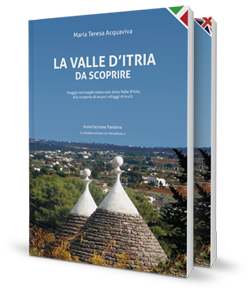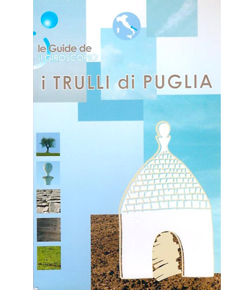Text translated by Google translator
In the caves of a small sinkhole in the Valle d'Itria was founded, in the 13th century, a small basiliana grain and in a cave was painted the image of The Madonna Odegitria.
Iconoclastic persecutions between the 7th and 9th centuries in the Byzantine East led to a diaspora of Greek-Eastern monks in southern Italy, carrying new religious cults. Among them were the followers of Saint Basilo who also founded some small monastery in already populated areas in Puglia, often choosing cave environments. It was in the territory now known as Valle d'itria that, as early as the 13th century, there was certainly a small religious center that belonged to the monastery of San Nicola di Casole in the South of Salento founded in 1099 under the rule of San Basilo. The settlement at the foot of ancient Martina, whose precise extent is unknown, consisted of agricultural land cultivated by settlers who corresponded to a tenth of the harvest at the Casole Monastery. In fact, it was a grancia, that is, a deposit for agricultural harvest, where there was also a small rock church and a cave-cell for the monk granciere, who in addition to being the caretaker also took care of the sacred offices. From the sources it is understood that the whole site was located at the bottom of a small sinkhole, that is, a small karst depression that is still found today in the place. Those cavities, the sacred cave in particular, were explored in 1988 by cavers Vittorio De Michele and Silvio Laddomada, who descended from the kitchen floor of the former Convent of the Cappuccini which was then built on the site. So it was discovered that church cave was then used as a water well and, finally to the present day, as a storage for various waste. The two columns of the altar with the capitals decorated were cleared.
In the 15th century the cave-church was known in the area as the church of Santa Maria de Martina, then Santa Maria d'Itria, and was a very frequent sanctuary where the fresco of Madonna Odegitria, then Idria, also Itria was venerated. The image, however, was not the widespread one of Madonna holding the Child Jesus and with her hand points the way (Jesus). In fact Odegitria literally from the Greek odos which means guide, and egheter that means away. In this church Madonna was painted half bust with her hands clasped and without a Child Jesus, recalling an image of the Odegitria painted in Pera, the ancient city of Morea, in the area of the present Peloponnese in Greece, at the time dominated by Venetians.
In 1545 in Martina Franca, the Cappuccini friars settled in that sinkhole, initially using as dwellings the premises of the former basiliano grancia and the rock church of Santa Maria d'Itria to officiate. In 1557, construction work began on the Convent, which, already completed in 1587, became the site for the novices. After a year or two, the convent church dedicated to the Madonna Assunta was already built. In the following centuries the church was continuously embellished with works of artistic interest, including the chapel dedicated to Maria d'Itria, in which the fries transferred the ancient fresco of the Madonna Odegitria from the church-cave, an image enriched at the time on the sides with San Giovanni Battista and Maria Maddalena, as is admired even today. The moment of the transfer was solemn, with a large procession attended by the secular clergy, regular and the many faithful, as well as the civil authorities.
The whole church is a jewel, whose artistic sobriety outside the facade, redesigned in 1698 by the cappuccino reiar Angelo Bruno, gives way inside the scenic wonders of the eighteenth-century wooden altars to intangle, excellent works of masters Marangoni, lay brothers skilled intarsitors and cabinet makers. Admirable work on the central altar is the canvas of the Salentino painter Donato Antonio D'Orlando that depicts Maria Assunta in Cielo (1589) to which the church is named.
.
To learn more:
Basiliani e Cappuccini a Santa Maria d'Itria, in Riflessioni Umanesimo della Pietra - pp.23-44 - di Giovanni Liuzzi.
Santa Maria d'Itria a Martina Franca - Storia del Convento dei Cappuccini dai Basiliani ai Somaschi - 2017 - di Giovanni Liuzzi.











